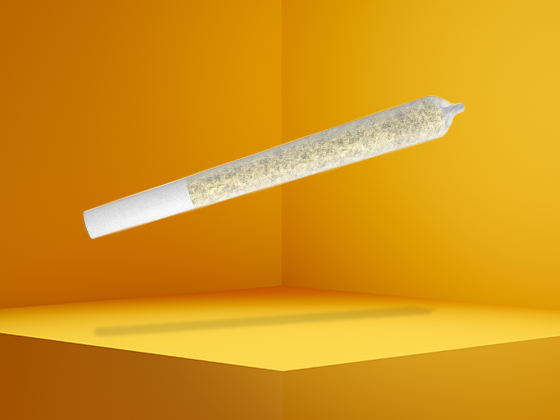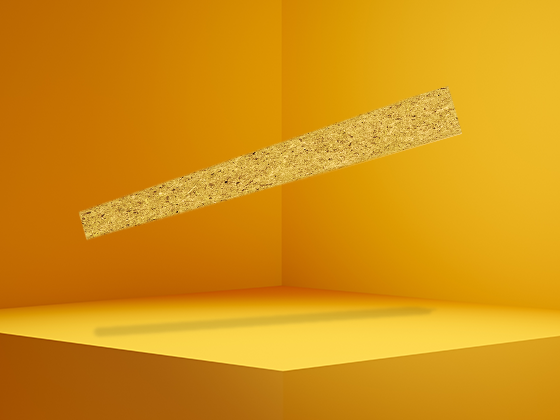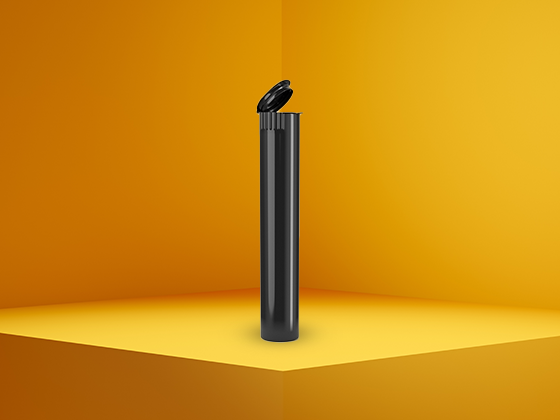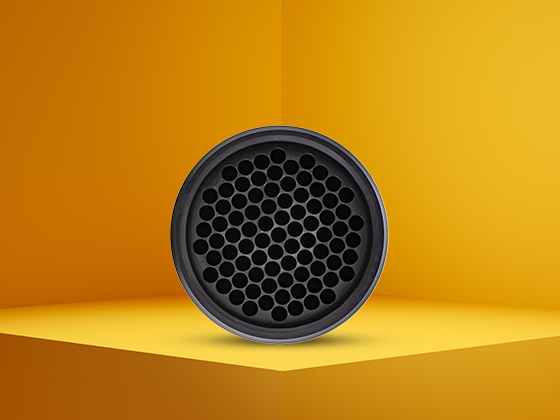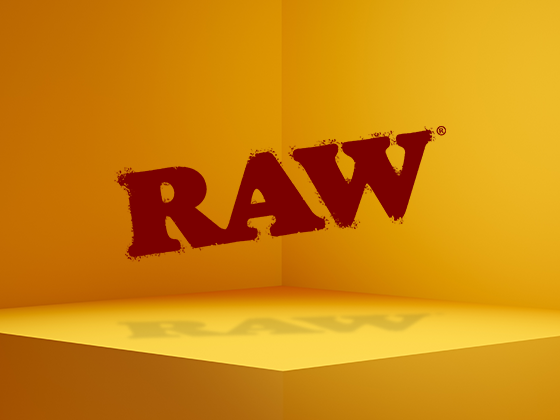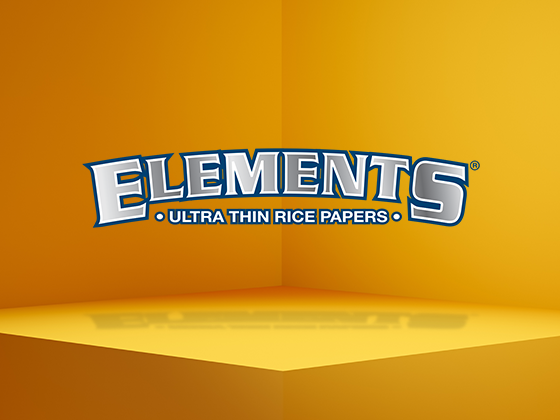Comparison
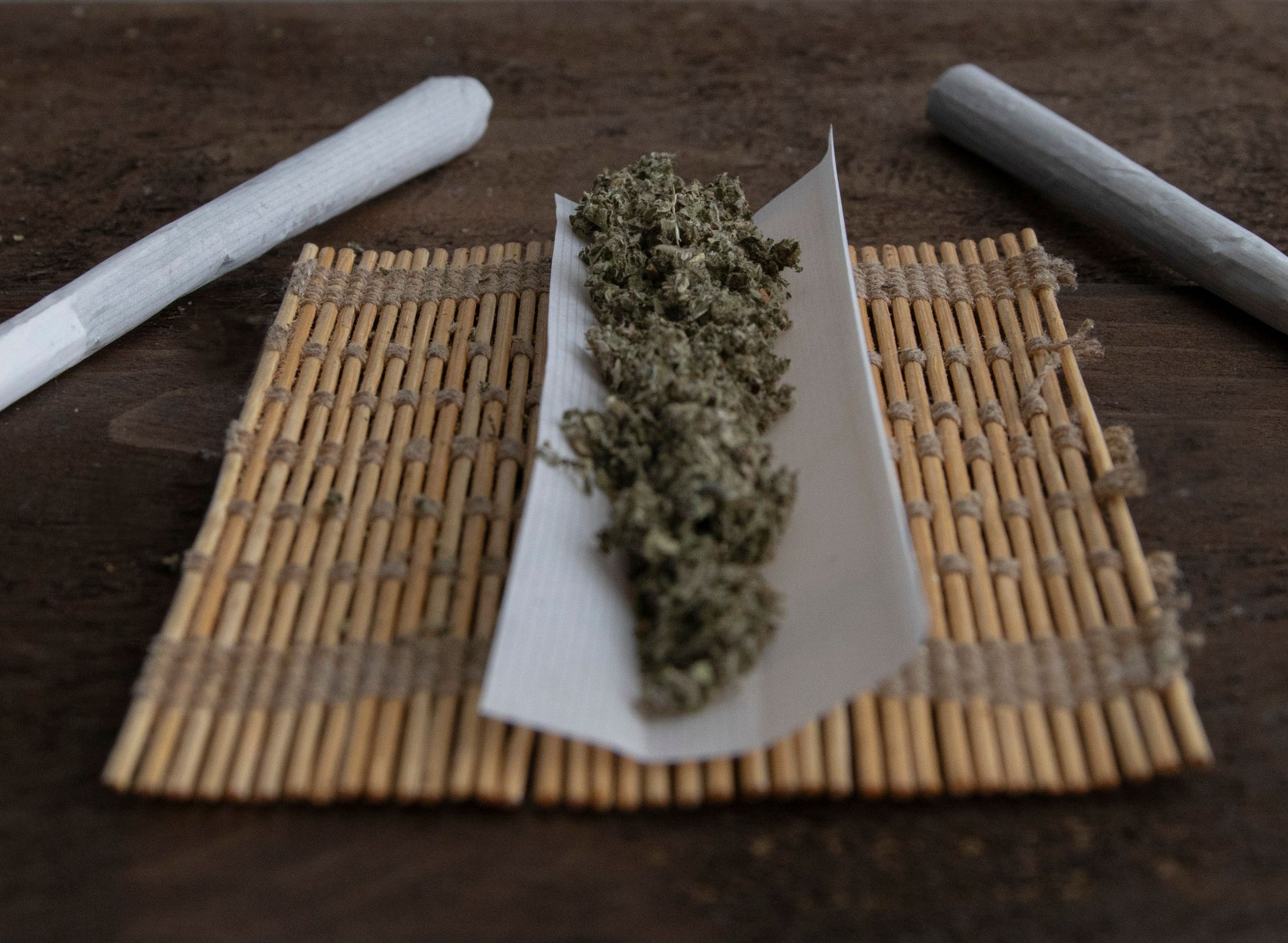
branding
Understanding the Difference: RAW Black Cones vs. Classic Cones
Table of Contents
Introduction to RAW Cones
RAW Black Cones Overview
Unique Features
Material Composition
RAW Classic Cones Overview
Classic Characteristics
Traditional Appeal
Comparing RAW Black vs Classic
Burn Rate Differences
Flavor Profile Impact
Thickness Comparison
Size Options Available
How to Choose the Right RAW Cone
Sourcing Quality RAW Cones
Future Innovations in RAW Cone Technology
Understanding the Difference: RAW Black Cones vs. Classic ConesFor enthusiasts seeking the perfect smoking experience, understanding the nuances between RAW black cones and classic cones can significantly impact enjoyment. These two popular varieties from the respected RAW brand offer distinct characteristics that cater to different preferences and occasions. This guide explores their differences, helping you make an informed choice for your next purchase.Introduction to RAW ConesRAW has established itself as a premier brand in the rolling paper industry, known for natural, unrefined products that prioritize purity and quality. Their pre-rolled cones have gained immense popularity for convenience and consistency, eliminating the learning curve associated with hand-rolling.According to our extensive collection of premium RAW cones, these products consistently rank among the most sought-after smoking accessories due to their craftsmanship and reliability. The brand offers several varieties, with Classic and Black lines being the most distinctive options.RAW Black Cones OverviewUnique FeaturesRAW black cones represent the ultra-thin, premium tier of the RAW product line. These sophisticated cones are designed for smokers who prioritize a slow, even burn with minimal paper interference. The black line is immediately recognizable by its distinctive darker appearance and ultra-thin profile.Material CompositionWhat sets RAW black cones apart is their construction from ultra-thin unrefined plant fibers. These papers are approximately 20% thinner than the classic variety, creating a nearly translucent appearance. This thinness allows for:
Less paper per smoke
Reduced paper taste
More prominent flavor from the contents
A smoother overall experience
As detailed in this comparison of RAW cone varieties, the black cones use a specialized watermark system and natural plant gums to maintain structural integrity despite their delicate composition.RAW Classic Cones OverviewClassic CharacteristicsThe RAW classic cones are the original offering that built the brand's reputation. These light brown, unbleached cones provide a balanced smoking experience that has become the industry standard. They feature:
Natural unrefined brown appearance
Standard thickness paper
Reliable structural integrity
Consistent, even burn
Traditional AppealClassic RAW cones appeal to traditionalists and those who appreciate a slightly more substantial cone that's less delicate during handling and packing. The classic line offers excellent flavor with a bit more durability than their black counterparts.According to the ultimate guide to RAW cones, classic cones remain the bestselling variety due to their versatility and approachable nature for both beginners and experienced users.Comparing RAW Black vs ClassicBurn Rate DifferencesOne of the most significant differences between RAW cones black vs classic varieties is the burn rate:
Black cones: Slower, more controlled burn due to ultra-thin paper
Classic cones: Moderate burn rate that strikes a balance between duration and consistency
This distinction makes black cones particularly appealing for longer sessions or when savoring premium contents.Flavor Profile ImpactThe thickness of the paper directly affects how much the natural flavors come through:
Black cones: Minimal paper taste, allowing for maximum flavor appreciation
Classic cones: Slight paper presence that some users actually prefer for its traditional experience
Thickness ComparisonThe physical differences between these papers create distinct handling characteristics:
Black RAW cones require more delicate handling during packing and are slightly more prone to tearing if handled roughly
Classic cones offer more forgiveness during packing and are recommended for beginners
As explained in this packing guide, the technique may need slight adjustments depending on which variety you choose.Size Options AvailableBoth RAW black cones and classic cones come in various sizes to accommodate different preferences:
1 ¼ (84mm) - Personal size
King Size (110mm) - Standard popular option
Lean (110mm) - Slimmer diameter
Peacemaker (140mm) - Extended session
Challenge Cone (280mm) - Party size
This size guide provides detailed information on each option's capacity and ideal usage scenarios.How to Choose the Right RAW ConeWhen deciding between RAW black cones and classic cones, consider these factors:
Experience level: Beginners may prefer the forgiving nature of classics
Flavor priority: Flavor purists should opt for black cones
Session length: Longer sessions benefit from the slower burn of black cones
Handling comfort: Those who pack frequently might appreciate the durability of classics
Budget considerations: Black cones typically command a slight premium price
Sourcing Quality RAW ConesTo ensure you're getting authentic RAW products, purchase from reputable suppliers. This purchasing guide outlines what to look for when buying RAW cones, including authentication features and pricing expectations.Both varieties are available in different pack quantities, from individual packs to bulk wholesale options that provide significant savings for regular users.Future Innovations in RAW Cone TechnologyRAW continues to refine their cone technology, with potential developments including more sustainable materials, enhanced gumlines, and new size options. The distinction between black and classic lines represents RAW's commitment to providing options that cater to the evolving preferences of smoking enthusiasts.Whether you choose the ultra-thin experience of RAW black cones or the reliable performance of the classics, both offer the natural, unrefined quality that has made RAW a leader in the industry. Your choice ultimately comes down to personal preference and the specific experience you're seeking.
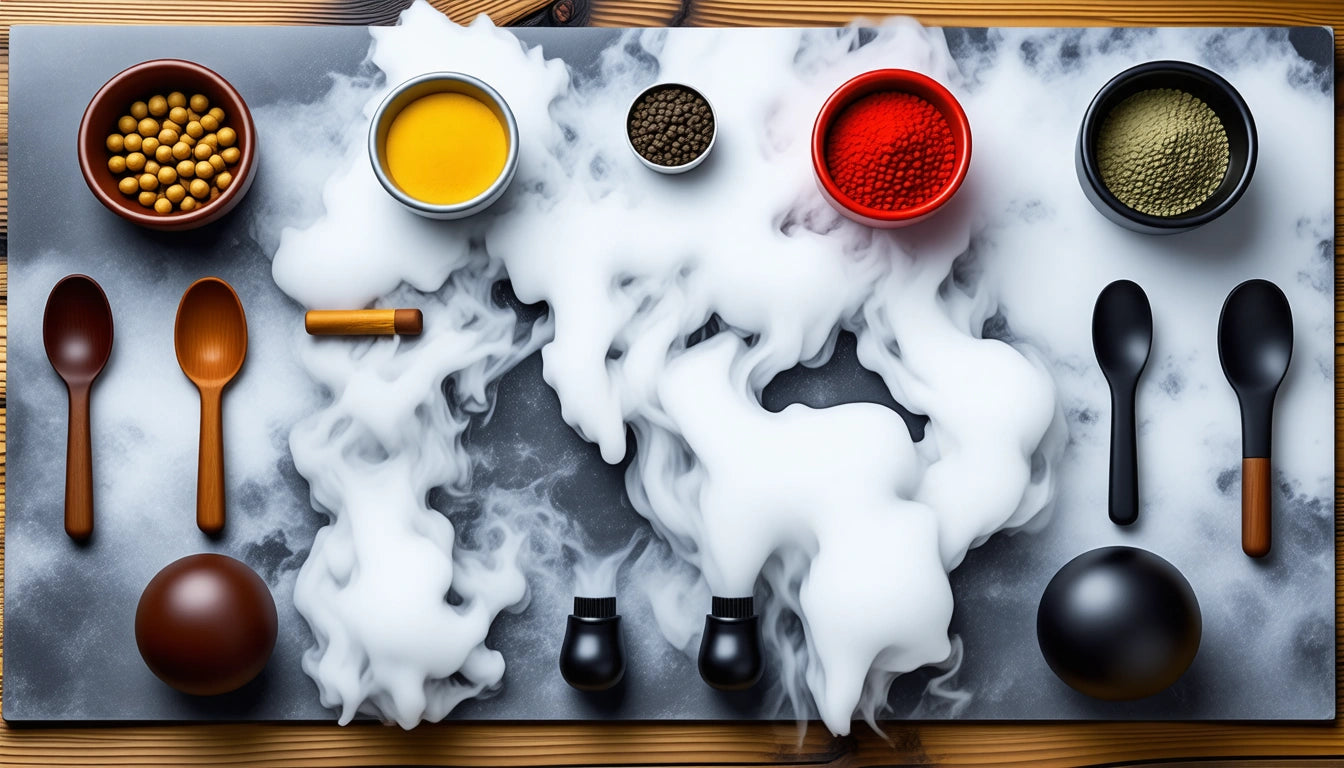
flower
Joint vs. Bowl: Comparing Two Popular Smoking Methods
Table of Contents
Basics of Joints and Bowls: Understanding the Fundamentals
Consumption Efficiency: How Joints and Bowls Compare
Flavor and Experience: Taste Differences Between Methods
Convenience and Portability: On-the-Go Considerations
Cost-Effectiveness: Long-Term Value Analysis
Best Scenarios for Each Method: When to Choose Joint or Bowl
When it comes to cannabis consumption, the age-old debate of joint vs bowl continues to spark discussions among both newcomers and experienced users. Each method offers distinct advantages and experiences that cater to different preferences, situations, and desired effects. Understanding these differences can help consumers make informed choices about their preferred consumption method.Basics of Joints and Bowls: Understanding the FundamentalsJoints are hand-rolled cigarettes containing ground cannabis flower, typically wrapped in thin rolling papers. They may include a filter or tip at one end to prevent plant material from entering the mouth and to provide structural support. As outlined in this comprehensive guide, joints represent one of the most traditional and widely recognized methods of cannabis consumption.Bowls, on the other hand, refer to the smoking chamber of a pipe where ground cannabis is placed. Made from various materials including glass, metal, ceramic, or wood, pipes offer a reusable smoking device that doesn't require the rolling skills necessary for joints. The key differences between pipes and joints extend beyond their physical construction to include efficiency, convenience, and experience factors.Consumption Efficiency: How Joints and Bowls CompareBurn Rate and ConservationJoints continuously burn once lit, which can lead to wasted product if not consistently inhaled. This continuous burn means that even when not actively taking a hit, the cannabis is being consumed. In contrast, bowls allow for more controlled consumption since the flame is only applied when taking a hit, making them generally more efficient for solo sessions.For producers and dispensaries looking to optimize their operations, specialized filling equipment for pre-rolls and other products can significantly improve efficiency and consistency in preparing cannabis products for either consumption method.Dosage ControlBowls provide better dosage control as users can pack exactly how much they want to consume in a single session. Joints typically contain more cannabis than a single bowl and are often designed for multiple people or extended sessions.Highlight: While joints continuously burn and may waste product when smoking alone, bowls offer on-demand heating that conserves cannabis and provides better dosage control for individual sessions.Flavor and Experience: Taste Differences Between MethodsThe materials used in each method significantly impact flavor profiles. Rolling papers can impart subtle flavors to the smoke, with options ranging from unflavored hemp to fruit-flavored varieties. Some users prefer the ritual of rolling the perfect joint, finding the process itself to be a meaningful part of the experience.Glass bowls are prized for their neutral impact on flavor, allowing the natural terpene profile of the cannabis to shine through. However, resin buildup in pipes can affect taste over time, requiring regular cleaning to maintain optimal flavor.Convenience and Portability: On-the-Go ConsiderationsJoints excel in portability, requiring no additional equipment beyond a lighter. They're discreet, disposable, and easily transported without concern for breakage. This makes them particularly popular for social gatherings and outdoor activities.Bowls require carrying both the pipe and cannabis separately, presenting a slightly less convenient option for on-the-go use. However, they offer the advantage of reusability and potentially better wind resistance when smoking outdoors.Preparation Time
Joints require preparation time for grinding, rolling, and sealing
Bowls need only grinding and packing, which is typically faster
Pre-rolled joints eliminate preparation time entirely
Both methods require practice to master optimal preparation techniques
Cost-Effectiveness: Long-Term Value AnalysisFrom a long-term perspective, bowls generally offer better economic value. The initial investment in a quality pipe is offset by its reusability and the efficiency of cannabis consumption. Joints require ongoing purchases of rolling papers and filters, plus they typically use more cannabis per session.For those concerned about the environmental impact, pipes produce less waste compared to the paper, packaging, and leftover materials associated with joints. This consideration has become increasingly important for environmentally conscious consumers.When comparing joints to other rolled options, many consumers also consider the differences between blunts and joints or how spliffs compare to traditional joints.Best Scenarios for Each Method: When to Choose Joint or BowlJoints tend to excel in social settings where passing and sharing is common practice. They're ideal for group sessions, concerts, and situations where carrying equipment might be impractical. The communal aspect of passing a joint has cultural significance that many users value as part of their cannabis experience.Bowls are particularly well-suited for solo sessions, controlled dosing, and situations where conservation is a priority. They're also preferable for home use where cleaning and storage are more convenient. For those who prefer alternative joint-rolling methods, there are creative approaches to rolling without traditional filters.When deciding between joint or bowl, consider your specific needs regarding portability, efficiency, flavor preferences, and social context. Many experienced users maintain both options in their collection, selecting the appropriate method based on the specific circumstances of each consumption occasion.
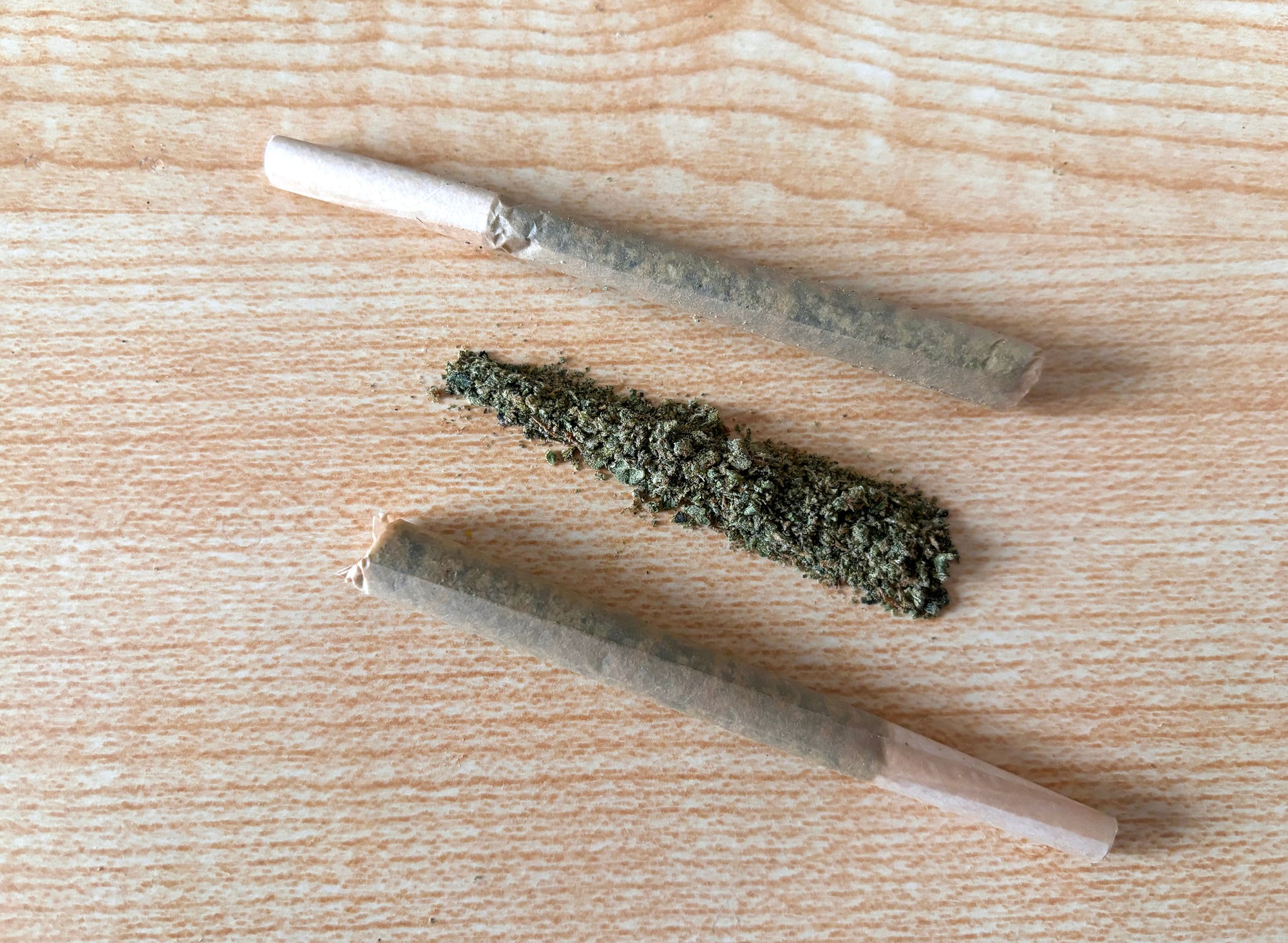
branding
Comparing RAW and Elements: Understanding the Differences
Table of Contents
Origins and Brand Philosophy
Material Composition and Manufacturing
Product Variety and Options
Smoking Experience and Flavor Profile
Environmental Impact and Sustainability
Price Point and Value Comparison
Making Your Selection Based on Preferences
nnComparing RAW and Elements: Understanding the DifferencesnnWhen it comes to rolling papers, two brands consistently stand at the forefront of discussions among enthusiasts: RAW and Elements. Both have cultivated dedicated followings, but understanding the nuances between these popular brands can help consumers make more informed choices based on their specific preferences and priorities.nnOrigins and Brand PhilosophynnRAW, founded by Josh Kesselman, emerged with a mission to create the purest, most natural rolling papers possible. The brand has built its identity around being unrefined, unbleached, and additive-free. As explored in this comprehensive guide to RAW papers and accessories, the company emphasizes transparency in its manufacturing processes and materials.nnElements, on the other hand, was created with a focus on combining traditional papermaking techniques with innovative materials. The brand highlights its ultra-thin rice paper design and unique watermark system that prevents uneven burning, sometimes called "canoeing."nnMaterial Composition and ManufacturingnnRAW PapersnnRAW papers come in several varieties, with the most popular being:nnnRAW Classic: Made from unbleached natural fibersnRAW Organic Hemp: Produced using organically grown hempnRAW Black: Ultra-thin premium papersnnnAccording to this comparison of RAW varieties, each type offers slightly different burning characteristics and thickness levels, catering to different user preferences.nnElements PapersnnElements papers primarily feature:nnnRice paper base: Ultra-thin and slow-burningnSugar gum: Instead of tree sap adhesivesnWatermark system: Creates even burnsnnnThe rice paper composition gives Elements a distinctive translucent appearance compared to the more opaque look of RAW papers.nnProduct Variety and OptionsnnBoth brands offer extensive product lines beyond basic rolling papers.nnRAW has expanded into a comprehensive ecosystem of smoking accessories, including pre-rolled cones in various sizes. For those interested in larger formats, our 115mm Mini Bomb size cones that hold approximately 1.5 grams are popular options for both personal and small-batch commercial use.nnElements maintains a more focused product line, concentrating primarily on papers and a select range of accessories like rolling trays and filter tips. Their product range tends to emphasize quality over quantity of options.nnBoth brands offer pre-rolled cones, but RAW provides a wider variety of sizes and styles, while Elements focuses on consistency and performance.nnSmoking Experience and Flavor ProfilennThe smoking experience differs notably between these brands:nnRAW ExperiencennRAW papers are designed to have minimal impact on the natural flavor of the material being smoked. The unbleached, natural fibers aim to provide a pure experience with:nnnVery mild, slightly earthy natural tastenMedium burn ratenMinimal ashnnnAs detailed in this exploration of RAW organics, many users choose these papers specifically to preserve the natural terpene profiles of premium flower.nnElements ExperiencennElements papers offer:nnnNearly tasteless smoke due to rice paper compositionnSlower burn rate than many competitorsnMinimal ash that turns to caramel due to the rice and sugar compositionnnnThe ultra-thin design of Elements papers results in less paper per surface area, which many users report allows for more pronounced flavor from their smoking material.nnEnvironmental Impact and SustainabilitynnEnvironmental considerations have become increasingly important for consumers:nnRAW emphasizes sustainability through:nnnUse of unbleached fibersnHemp-based options (a more sustainable crop than trees)nThe RAW Foundation, which supports environmental and charitable initiativesnnnElements focuses on environmental responsibility through:nnnRice paper that produces less ash and residuenSugar-based adhesives instead of chemicalsnPackaging made from sustainable materialsnnnBoth brands have taken steps to reduce environmental impact, though RAW tends to make this a more central part of its brand messaging.nnPrice Point and Value ComparisonnnWhen comparing costs:nnnRAW papers typically range from budget-friendly Classic varieties to premium-priced RAW BlacknElements papers generally fall in the mid-to-premium price rangenPre-rolled cones from both brands command a premium over flat papersnnnThe value proposition extends beyond just price. RAW has built a strong brand community, with authentic products being highly sought after. This guide to RAW authenticity helps consumers ensure they're purchasing genuine products, as counterfeits have become common due to the brand's popularity.nnMaking Your Selection Based on PreferencesnnWhen choosing between RAW and Elements, consider these factors:nnRAW might be preferable if you value:nnnNatural, unbleached materialsnBrand community and philosophynWider product ecosystemnHemp-based optionsnnnElements might be the better choice if you prioritize:nnnUltra-thin papers with minimal presencenEven-burning characteristicsnMinimal ash and residuenTasteless smoking experiencennnMany enthusiasts keep both brands on hand for different occasions and materials. As explored in this guide to purchasing RAW products, authenticity should be a primary concern regardless of which brand you choose, as counterfeits can contain harmful additives and chemicals not found in genuine products.nnWhether you opt for the earthy, natural approach of RAW or the ultra-thin, clean-burning experience of Elements, both brands have earned their reputations through consistent quality and attention to the smoking experience.
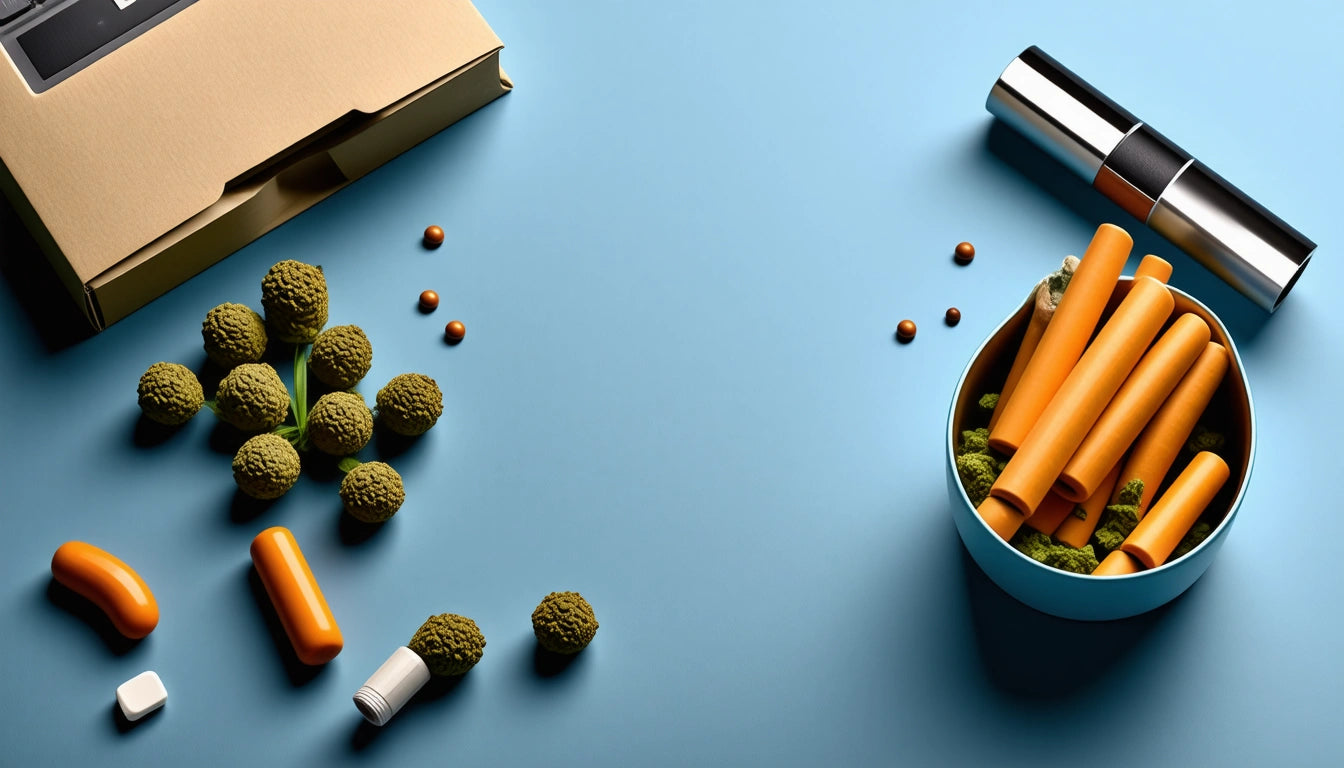
flower
Understanding Pre-Roll Blunts: Differences, Comparisons, and Top Picks
Table of Contents
What is a Pre-Roll Blunt?
Pre-Rolls vs Blunts: Understanding the Distinction
Blunt vs Joint vs Pre-Roll: Key Differences
Best Pre-Rolled Blunts: Top Options on the Market
Storage and Freshness: Maintaining Quality
Consumption Tips: Getting the Most from Pre-Roll Blunts
Packaging Considerations for Pre-Roll Products
Future of Pre-Roll Blunts: Innovations and Market Trends
The cannabis consumption landscape continues to evolve with convenient options becoming increasingly popular among both new and experienced users. Pre-roll blunts represent one such innovation, combining the traditional appeal of blunts with the convenience of pre-rolled products. This comprehensive guide explores what makes pre-roll blunts unique, how they compare to other consumption methods, and which options stand out in today's market.What is a Pre-Roll Blunt?A pre-roll blunt is a ready-to-smoke cannabis product that combines the characteristics of a blunt with the convenience of a pre-roll. Traditionally, blunts are made by hollowing out cigars and refilling them with cannabis, while pre-rolls are professionally prepared smoking products. Pre-roll blunts merge these concepts, typically using tobacco leaf or hemp wraps pre-filled with ground cannabis flower.Unlike standard pre-rolls which usually use thin rolling papers, pre-roll blunts feature thicker wrapping materials that burn slower and often impart additional flavors to the smoking experience. According to industry insights on pre-rolls, these products offer consistency in dosing and convenience that appeals to a wide range of consumers.Pre-Rolls vs Blunts: Understanding the DistinctionTraditional BluntsTraditional blunts are hand-rolled using tobacco leaf wrappers or cigar wraps that have been emptied of their original tobacco content. They typically:
Contain more cannabis than the average joint
Burn slower due to the thickness of the wrap
Impart a tobacco flavor that some consumers prefer
Require skill and time to prepare properly
Standard Pre-RollsStandard pre-rolls are professionally prepared joints that come ready to smoke. They usually:
Use thin rolling papers made from rice, hemp, or other plant materials
Contain a predetermined amount of ground cannabis
May include a filter or tip
Offer convenience and consistency
Pre-roll blunts bridge these categories by offering the tobacco wrap experience in a convenient, ready-to-use format. Understanding these key differences helps consumers make informed choices based on their preferences.Highlight: Pre-roll blunts combine the slower burn and robust flavor profile of traditional blunts with the convenience and consistency of professionally prepared pre-rolls.Blunt vs Joint vs Pre-Roll: Key DifferencesWhen comparing blunts, joints, and pre-rolls, several factors come into play:Material CompositionBlunts use tobacco leaf wrappers, joints use thin rolling papers, and pre-rolls can use either depending on the style. Pre-roll blunts specifically use blunt wraps but come professionally prepared.Size and CapacityBlunts typically hold more cannabis than joints due to their larger size. Pre-rolls vary in size but generally follow standard joint dimensions unless specifically marketed as pre-roll blunts, which tend to be larger.Flavor ProfileThe flavor differences between these formats are significant. Blunts impart tobacco notes, joints allow for more pure cannabis flavor, and pre-roll blunts combine these characteristics with potential added flavors from manufacturers.Burn RateJoints burn relatively quickly, blunts burn slowly due to their thicker wrapping, and pre-roll blunts maintain the slower burn rate that traditional blunt users appreciate.Best Pre-Rolled Blunts: Top Options on the MarketThe market for pre-rolled blunts has expanded significantly, with several standout products gaining popularity:Premium Brand OfferingsLeading cannabis brands have introduced pre-roll blunts featuring high-quality flower, precise rolling techniques, and innovative wrapping materials. These premium options often highlight specific strains and terpene profiles.Infused Pre-Roll BluntsFor enhanced potency, many manufacturers offer infused pre-roll blunts containing concentrates, kief, or distillates. These products deliver stronger effects and are typically marketed toward experienced consumers.Flavor-Enhanced OptionsSome of the best pre-rolled blunts feature added terpenes or natural flavoring agents that complement the cannabis strain inside, creating unique sensory experiences.Storage and Freshness: Maintaining QualityProper storage is essential for maintaining the quality of pre-roll blunts. Most manufacturers package these products in specialized protective packaging that preserves freshness until consumption. Once purchased, consumers should store pre-roll blunts in airtight containers away from direct light and extreme temperatures.The shelf life of pre-roll blunts depends on various factors including the moisture content of the cannabis, the quality of the wrap, and storage conditions. Generally, properly stored pre-roll blunts maintain optimal quality for several months, though they're best enjoyed within a few weeks of purchase.Consumption Tips: Getting the Most from Pre-Roll BluntsTo maximize the pre-roll blunt experience, consider these recommendations:
Light evenly around the circumference for a consistent burn
Take slower, gentler draws compared to joints due to the denser smoke
Rotate the blunt while smoking to prevent "canoeing" (uneven burning)
Consider using a holder to keep fingers clean and preserve the end portion
For detailed guidance on proper technique, smoking tips and safety practices can enhance both enjoyment and the overall experience.Packaging Considerations for Pre-Roll ProductsThe packaging of pre-roll blunts serves multiple purposes beyond simply containing the product. Quality packaging protects against moisture loss, physical damage, and exposure to air that can degrade cannabinoids and terpenes. For brands, investing in proper packaging solutions is essential.Many manufacturers use child-resistant tubes or boxes, often with humidity control elements. The cost considerations for pre-rolled blunts include these packaging requirements, which contribute to the final retail price but help maintain product integrity.Future of Pre-Roll Blunts: Innovations and Market TrendsThe pre-roll blunt category continues to evolve with several emerging trends shaping its future:
Sustainable wrapping materials that maintain the blunt experience without tobacco
Advanced rolling techniques that improve airflow and burn consistency
Specialized blends combining multiple strains for targeted effects
Integration of functional ingredients like CBG, CBN, or botanical supplements
As consumer preferences evolve and technology advances, pre-roll blunts will likely continue gaining market share by offering the authentic blunt experience with the convenience modern cannabis consumers demand. Understanding shelf life and regulations will remain important considerations as this product category matures and expands into new markets.

business tips
Bongs vs. Joints: Health, Smell, and Potency Compared
Table of Contents
Health Comparison: Are Bongs Healthier Than Joints?
The Smell Factor: Do Bongs Smell Less Than Joints?
Potency Analysis: Do Bongs Get You More High Than Joints?
Consumption Efficiency and Material Conservation
Practical Considerations for Regular Users
When choosing between bongs and joints, consumers often weigh factors like health impacts, odor control, and potency differences. Each consumption method offers distinct advantages depending on your priorities and circumstances. This comprehensive comparison examines the science behind these common consumption methods to help you make informed decisions.Health Comparison: Are Bongs Healthier Than Joints?The question of whether bongs are healthier than joints centers primarily around filtration and combustion dynamics.Filtration BenefitsBongs offer water filtration that can remove some particulate matter and water-soluble compounds. According to this comparison of smoking methods, water filtration can trap up to 90% of certain toxins while cooling the smoke, resulting in less throat and lung irritation.Combustion TemperatureJoints typically burn at higher temperatures than bong hits, potentially producing more tar and carcinogens. The continuous burning of a joint also means exposure to smoke even when not actively inhaling.Scientific PerspectiveWhile bongs do filter some harmful components, they don't eliminate all risks associated with combustion. Both methods involve inhaling combusted plant material, which contains potential carcinogens and respiratory irritants.For those concerned about precise dosing, using accurate digital scales for cannabis measurement can help ensure consistent intake regardless of consumption method.The Smell Factor: Do Bongs Smell Less Than Joints?Odor control is often a priority for discreet users, making the question of whether bongs smell less than joints particularly relevant.Smoke Production and ContainmentJoints continuously produce sidestream smoke throughout the entire smoking session, releasing aroma into the surrounding environment. Studies on joint smoking methods indicate that approximately 50-75% of the smoke from a joint enters the environment rather than the user's lungs.Bong Smell CharacteristicsBongs produce smoke only during active inhalation, and the water can trap some aromatic compounds. However, the concentrated nature of bong hits can create intense, though shorter-duration, odor events.Highlight: While joints continuously release smoke and aroma, bongs contain smoke until inhalation but produce more concentrated odor during use. Overall, bongs tend to create less lingering smell when used properly.Potency Analysis: Do Bongs Get You More High Than Joints?The question of whether bongs get you more high than joints involves factors like delivery efficiency and bioavailability.Delivery EfficiencyBongs allow users to inhale larger volumes of smoke in a single breath compared to joints. This concentrated delivery method can result in more cannabinoids entering the bloodstream at once, potentially creating a more intense immediate effect.Combustion EfficiencyJoints lose some cannabinoids to sidestream smoke and continuous burning. Research on joint efficiency suggests that up to 60% of THC may be lost to combustion or sidestream smoke when using joints.User Experience FactorsThe cooling effect of water in bongs allows for larger inhales with less throat irritation, potentially delivering more cannabinoids per hit. However, experienced joint smokers using proper joint smoking techniques can maximize efficiency through controlled inhalation methods.Consumption Efficiency and Material ConservationBeyond health and potency considerations, efficiency in material use can be an important factor for regular consumers.Material UsageJoints continuously burn whether being actively inhaled or not, potentially wasting material between puffs. Bongs only burn material during active inhalation, conserving cannabis during pauses.Quantifiable Differences
Joints typically require 0.3g to 1g of cannabis per unit
Bong bowls usually contain 0.1g to 0.3g per loading
Material efficiency can be 20-30% higher with bongs
For precise measurement of cannabis quantities, many users rely on specific tools and techniques to ensure consistent experiences.Practical Considerations for Regular UsersWhen deciding between bongs and joints, several practical factors beyond health, smell, and potency come into play for regular consumers.Portability and DiscretionJoints offer superior portability and discretion in public settings, requiring no additional equipment or water. Bongs provide better odor control but are less portable and more conspicuous.Skill RequirementsJoints require some practice to roll effectively, while bongs need proper water levels and cleaning maintenance. Safety considerations are important for both methods, particularly regarding impairment duration.Cleaning and MaintenanceBongs require regular cleaning to prevent resin buildup and bacterial growth in the water. Joints require no maintenance but may need rolling accessories.For those prioritizing precise dosing with either method, using quality digital scales specifically designed for cannabis helps ensure consistent experiences by accurately measuring material quantities.
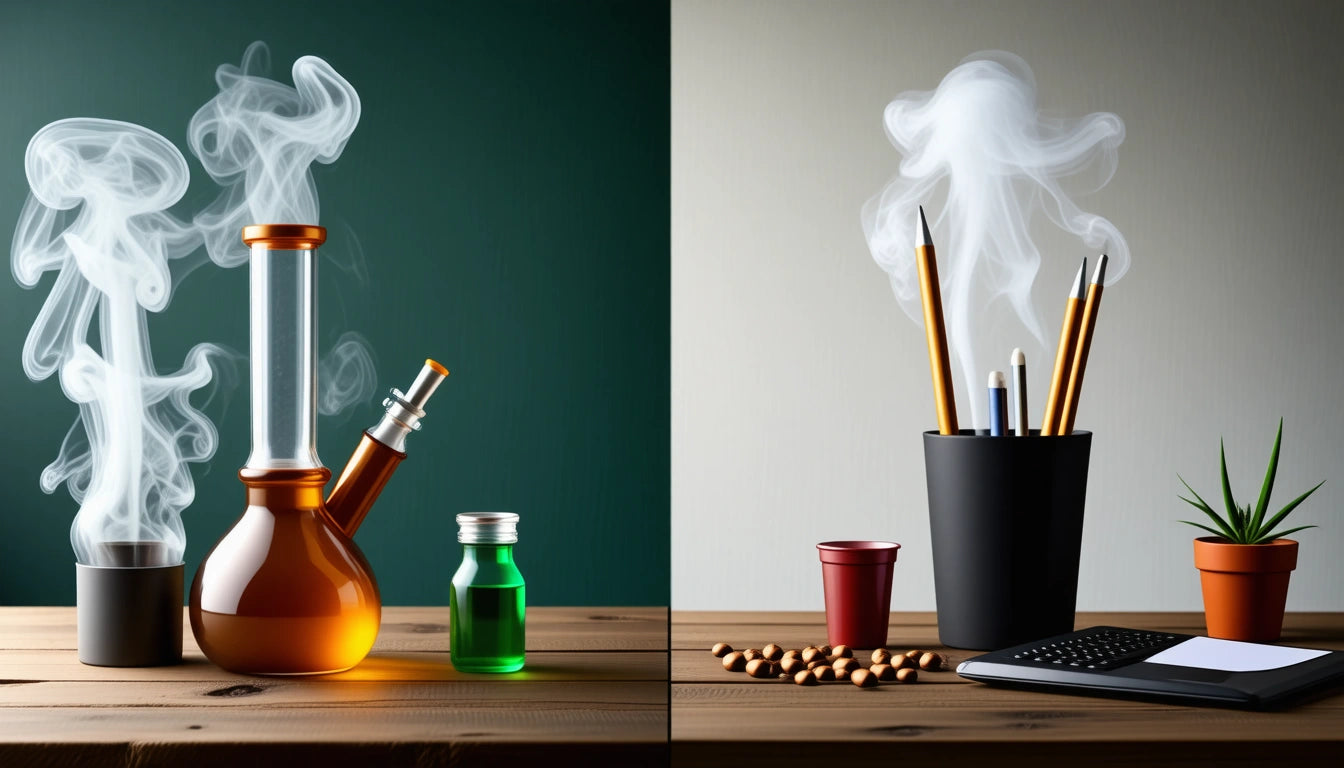
business tips
Comparing Smoking Methods: Bong, Joint, and Blunt Differences Explained
Table of Contents
Fundamental Differences: Bong vs Joint vs Blunt
Health Considerations Across Smoking Methods
Efficiency and Potency Comparison
Experience Factors: Flavor, Convenience, and Social Aspects
Material Considerations: Silicone vs Glass Bong
Preparation Tools and Techniques
Choosing Your Method: Personalized Recommendations
Cannabis consumption methods vary widely, with bongs, joints, and blunts representing three of the most popular traditional approaches. Each method offers distinct advantages and considerations regarding health impact, efficiency, flavor preservation, and overall experience. Understanding these differences helps consumers make informed choices based on their preferences and priorities.Fundamental Differences: Bong vs Joint vs BluntThe fundamental differences between these methods start with their basic construction:
Joints consist of cannabis wrapped in thin rolling papers, typically made from rice, hemp, or flax.
Blunts use tobacco leaf wraps or cigar wrappers to contain cannabis, creating a tobacco-cannabis hybrid experience.
Bongs are water pipes that filter smoke through water before inhalation, using a bowl to hold the cannabis.
According to a comparative analysis of bongs vs joints, the filtration mechanism in bongs represents the most significant functional difference, as it cools smoke and removes certain particulates before inhalation.Health Considerations Across Smoking MethodsHealth impacts vary significantly between smoking methods:Respiratory EffectsCombustion in any form produces tar and carcinogens, but filtration and material differences affect exposure levels. Research comparing blunts vs joints indicates that blunts may present additional health concerns due to the tobacco content, which introduces nicotine and additional carcinogens.Filtration BenefitsBongs offer filtration advantages that paper-based methods cannot provide. Water filtration removes some water-soluble toxins and cools the smoke, potentially reducing throat and lung irritation compared to direct combustion methods.Highlight: While all combustion methods pose health risks, bongs generally filter out more particulates than joints or blunts, potentially reducing some harmful exposure.Efficiency and Potency ComparisonThe efficiency of cannabinoid delivery differs between methods:Consumption RateJoints and blunts continuously burn whether being actively inhaled or not, leading to some waste. Comparative studies show that bowls and bongs allow users to consume only what they need at a given moment, potentially conserving material.Potency PerceptionBongs typically deliver larger volumes of smoke per inhalation, creating more immediate and intense effects. Joints and blunts provide a more gradual experience as they're consumed over time. Research on joint consumption indicates that the average joint contains 0.3 to 0.5 grams of cannabis, while bongs may use similar amounts but deliver effects more rapidly.Experience Factors: Flavor, Convenience, and Social AspectsFlavor ProfilesFlavor preservation varies significantly between methods:
Joints offer relatively pure flavor with minimal interference, especially when using unbleached or hemp papers.
Blunts introduce tobacco flavors that complement or alter the cannabis terpene profile.
Bongs can preserve certain flavor aspects while filtering others, with glass bongs generally providing cleaner taste than other materials.
Convenience and PortabilityJoints and blunts offer superior portability and discretion compared to bongs, which require water, are typically larger, and involve more components. Joint smoking guides often highlight this convenience factor as a primary advantage.Material Considerations: Silicone vs Glass BongWhen choosing bongs, material selection significantly impacts the experience:Glass BongsGlass provides a neutral medium that doesn't affect flavor and allows visibility of smoke quality. However, glass bongs are fragile and typically more expensive than alternatives.Silicone BongsSilicone offers durability and flexibility, making these bongs nearly indestructible and often travel-friendly. The tradeoff comes in potential subtle flavor impacts and less aesthetic appeal compared to glass options.The silicone vs glass bong debate ultimately centers on priorities: connoisseurs often prefer glass for flavor purity, while practical users appreciate silicone's durability.Preparation Tools and TechniquesProper preparation enhances any smoking experience. For all methods, consistent grinding of cannabis is essential for even burning and maximum surface area exposure. Quality grinders with consistent cutting mechanisms help achieve optimal particle size for each consumption method, with slightly coarser grinds typically working better for bongs and finer grinds for papers.For joint and blunt rolling, additional tools like rolling trays, filters, and humidity-controlled storage help maintain material quality and rolling ease. Bongs benefit from regular cleaning and proper water levels to maintain filtration efficiency.Choosing Your Method: Personalized RecommendationsThe ideal consumption method varies based on individual priorities:
Health-conscious users might prefer bongs with water filtration or vaporizers that avoid combustion entirely.
Flavor enthusiasts often gravitate toward clean glass pieces or minimalist papers that don't interfere with terpene profiles.
Social smokers typically appreciate the ritual and shareability of joints and blunts.
Efficiency-focused consumers may prefer bongs for their ability to deliver stronger effects with potentially less material.
According to comprehensive comparisons, many consumers maintain multiple consumption methods for different occasions and settings rather than committing exclusively to one approach.Understanding these key differences allows consumers to make informed choices aligned with their priorities, whether they value convenience, flavor preservation, potency, or health considerations most highly.
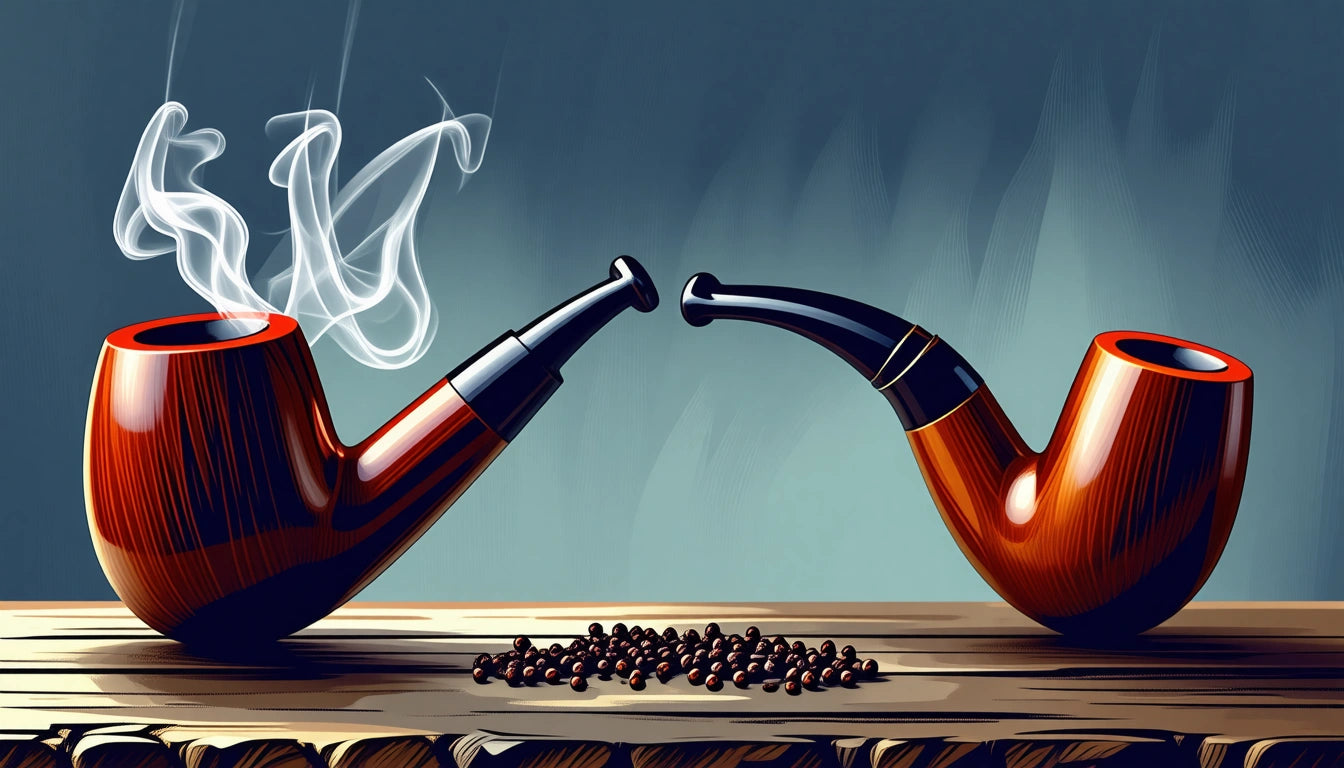
business tips
Pipe vs Joint: Understanding the Key Differences and Uses
Table of Contents
Basic Differences Between Pipes and Joints
Efficiency Comparison: Smoke Retention and Consumption
Flavor Experience and Terpene Preservation
Convenience Factors: Portability vs Reusability
Health Considerations When Choosing Between Pipes and Joints
Choosing the Right Method for Your Needs
When it comes to cannabis consumption methods, the pipe vs joint debate represents two of the most traditional and widely used approaches. Each method offers distinct advantages in terms of convenience, efficiency, flavor preservation, and overall experience. Understanding these differences can help consumers make informed choices based on their preferences and circumstances.Basic Differences Between Pipes and JointsPipes are reusable smoking devices typically made of glass, metal, wood, or silicone that feature a bowl for loading ground cannabis flower and a chamber through which smoke travels. Joints, on the other hand, are single-use rolling paper cylinders filled with ground cannabis that burn continuously once lit.The fundamental distinction lies in their construction and longevity. As explained in this comparison of joints and bowls, pipes require an initial investment but can be used repeatedly, while joints require rolling papers and filters for each use but leave no equipment to carry afterward.Efficiency Comparison: Smoke Retention and ConsumptionWhen comparing efficiency, pipes generally offer better conservation of cannabis. Research suggests pipes may provide a stronger effect than joints because they minimize sidestream smoke (smoke that escapes between puffs). With joints, as much as 40-50% of cannabis can be lost to sidestream smoke when not actively being inhaled.Pipes also allow users to control their dosage more precisely by cornering the bowl (lighting only a portion of the packed cannabis). Joints, once lit, continue to burn until extinguished or finished, which can lead to waste if not consumed in one session.Highlight: Pipes typically conserve more cannabis than joints by eliminating sidestream smoke and allowing for more controlled dosing through cornering techniques.Consumption Rate Comparison
Pipes: Consumed at user's pace, can be lit and extinguished multiple times
Joints: Burn continuously once lit, best consumed in a single session
Average consumption: A typical joint uses 0.3g to 0.5g, while a pipe bowl might use 0.1g to 0.3g per session
Flavor Experience and Terpene PreservationThe flavor profile differs significantly between pipes and joints. Many cannabis connoisseurs prefer pipes, particularly glass ones, for their clean flavor delivery. Without burning paper, pipes allow for a more direct experience of the plant's terpenes and cannabinoids.Joints, however, introduce the flavor of the rolling paper, which some users enjoy as part of the traditional experience. As discussed in this comprehensive guide to joints, different rolling papers (hemp, rice, etc.) can subtly alter the smoking experience.For maximum flavor preservation in either method, proper storage is essential. Our selection of child-resistant containers with airtight lids helps maintain freshness and potency of flower until you're ready to consume it, whether in a pipe or joint.Convenience Factors: Portability vs ReusabilityWhen it comes to convenience, joints and pipes serve different situations:Joint Advantages:
Disposable nature makes them ideal for on-the-go use
No need to carry equipment after consumption
Easily shared in social settings
Discreet and familiar form factor
Pipe Advantages:
No preparation time needed (unlike rolling joints)
More economical over time
Weather-resistant (joints can be affected by humidity or wind)
No need to carry rolling supplies
For those who prefer joints but struggle with rolling techniques, various tools and techniques can help achieve consistent results. Alternatively, pre-rolled cones offer convenience without requiring rolling skills.Health Considerations When Choosing Between Pipes and JointsBoth methods involve combustion, which produces tar and carcinogens. However, there are some health distinctions worth noting:Pipes, particularly those with water filtration, can remove some particulates and cool the smoke before inhalation. Simple glass pipes offer minimal filtration but eliminate paper combustion byproducts.Joints involve inhaling both cannabis and paper combustion products. However, using proper filters for joints can reduce the amount of particulate matter inhaled.Neither method eliminates the respiratory risks associated with smoking, but these differences may influence consumer choices based on health priorities.Choosing the Right Method for Your NeedsThe joint vs pipe decision ultimately depends on individual preferences and circumstances. Consider these factors when making your choice:
Budget considerations: Pipes require an upfront investment but save money over time
Usage frequency: Regular users may benefit from a pipe's reusability
Social vs solo use: Joints are traditionally easier to share in groups
Discretion needs: Joints leave no paraphernalia but produce more noticeable odor
Flavor preferences: Pipes generally offer purer cannabis flavor
Many consumers ultimately incorporate both methods into their routine, using pipes at home and joints for outings or special occasions. As this comparison of smoking methods suggests, understanding the full spectrum of consumption options allows for more personalized experiences.Whether you prefer the ritual of rolling a joint or the convenience of packing a pipe, both methods continue to stand the test of time in cannabis culture, each offering unique benefits that appeal to different consumer preferences and situations.
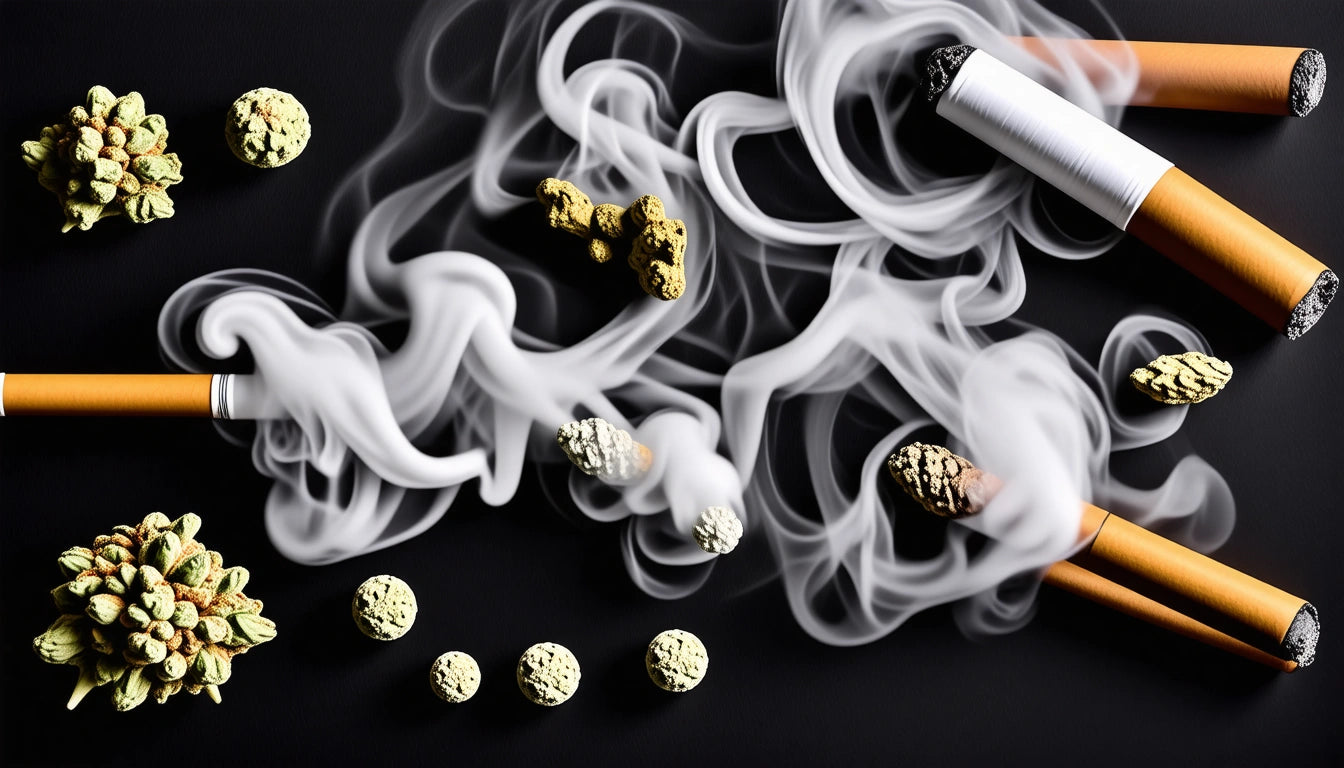
flower
Understanding the Differences: Joint, Blunt, and Spliff Explained
Table of Contents
Basic Differences: Joint vs Blunt vs Spliff
Materials and Construction Methods
Effects and Experience Differences
Health Considerations and Risks
Cultural and Regional Preferences
Practical Recommendations for Cannabis Consumers
Cannabis consumption methods vary widely, with rolling techniques being among the most traditional and popular options. Understanding the differences between joints, blunts, and spliffs helps consumers make informed choices about their preferred method. Each offers distinct characteristics in terms of materials, effects, and cultural significance.Basic Differences: Joint vs Blunt vs SpliffThe fundamental distinctions between these three rolling methods come down to their wrapping materials and contents:
Joints consist of cannabis flower wrapped in thin rolling papers, typically made from rice, hemp, or flax.
Blunts contain cannabis wrapped in tobacco leaf or cigar wraps, adding nicotine to the experience.
Spliffs combine cannabis and tobacco inside regular rolling papers, creating a hybrid experience.
As explored in this comparison of blunts and joints, the wrapper material significantly impacts flavor, burn rate, and overall experience.Materials and Construction MethodsJoint MaterialsJoints typically use thin, sometimes flavored rolling papers. Many consumers add a filter or "crutch" at one end to improve airflow and prevent plant material from entering the mouth. Joint papers come in various sizes, from single-wide to king-size, affecting the capacity and burn time.Blunt MaterialsBlunts traditionally use cigar wrappers or specific blunt wraps made from tobacco leaf. These thicker materials burn slower than joint papers and impart a distinctive flavor. Some manufacturers now offer tobacco-free blunt wraps as an alternative. Pre-roll blunts have also gained popularity in legal markets.Spliff ConstructionSpliffs use the same papers as joints but contain a mixture of cannabis and tobacco. The ratio varies according to preference, typically ranging from 20% to 80% tobacco. This combination affects burn rate, flavor profile, and effects. Understanding spliff construction helps consumers achieve their desired experience.Highlight: While joints contain only cannabis in rolling papers, blunts wrap cannabis in tobacco leaf, and spliffs mix cannabis with tobacco inside rolling papers.Effects and Experience DifferencesThe choice between joint, blunt, or spliff significantly impacts the user experience:Joint EffectsJoints deliver a pure cannabis experience without the influence of nicotine. Effects depend entirely on the strain and potency of the cannabis used. The thin paper allows for prominent terpene expression, highlighting the flavor profile of the specific strain.Blunt EffectsBlunts provide a combined cannabis and nicotine experience due to the tobacco wrapper. This combination often creates a more intense initial effect, with the nicotine producing a head rush that complements the cannabis high. Blunts typically burn slower, extending the session length.Spliff EffectsSpliffs offer a balanced experience between the relaxing properties of cannabis and the stimulating effects of tobacco. Many users report that spliffs provide a more alert, functional high compared to pure cannabis consumption. The tobacco content also affects the burn rate and smoke production.Health Considerations and RisksHealth implications vary between these consumption methods:Joints generally present fewer health concerns than methods involving tobacco, though inhaling any combusted material carries respiratory risks. Blunts and spliffs introduce nicotine and additional tobacco-specific compounds, potentially increasing addiction potential and associated health risks.Research on health implications suggests that regular blunt or spliff users may experience different respiratory effects compared to those who exclusively smoke joints.For consumers with children in their household, proper storage is essential regardless of consumption method. Safety guidelines for child-resistant packaging emphasize the importance of secure storage to prevent accidental ingestion of cannabis products by children, similar to precautions taken with medications and chemicals.Cultural and Regional PreferencesConsumption preferences often follow cultural and regional patterns:
Joints dominate in North America and much of the legal cannabis market
Blunts have strong cultural associations with hip-hop culture and certain regions of the United States
Spliffs are particularly common in Europe, especially in countries like the Netherlands and the United Kingdom
These preferences reflect historical access to materials, local tobacco use patterns, and evolving cannabis cultures. As consumer preferences evolve, many are exploring alternatives to traditional tobacco-containing options.Practical Recommendations for Cannabis ConsumersWhen deciding between joints, blunts, and spliffs, consider these practical factors:Choosing Based on Experience LevelBeginners might start with smaller joints, which offer more control over dosage. Experienced users often appreciate the extended session and combined effects of blunts. Those accustomed to tobacco might find spliffs provide a familiar transition to cannabis consumption.Selecting Appropriate MaterialsQuality materials significantly impact the smoking experience. For joints, unbleached hemp papers offer a clean flavor profile. Blunt enthusiasts might explore tobacco-free wraps for reduced health impacts. Spliff users should consider the quality and type of tobacco used.Alternative Consumption MethodsBeyond the joint vs blunt vs spliff comparison, consumers might explore other options like bowls or pipes, which eliminate paper or tobacco leaf entirely. Vaporizers offer another alternative with potentially reduced respiratory impact.Understanding these differences empowers consumers to make informed choices that align with their preferences, health considerations, and desired effects. Whether you prefer the purity of a joint, the slow burn of a blunt, or the balanced experience of a spliff, each method offers a unique approach to cannabis consumption.
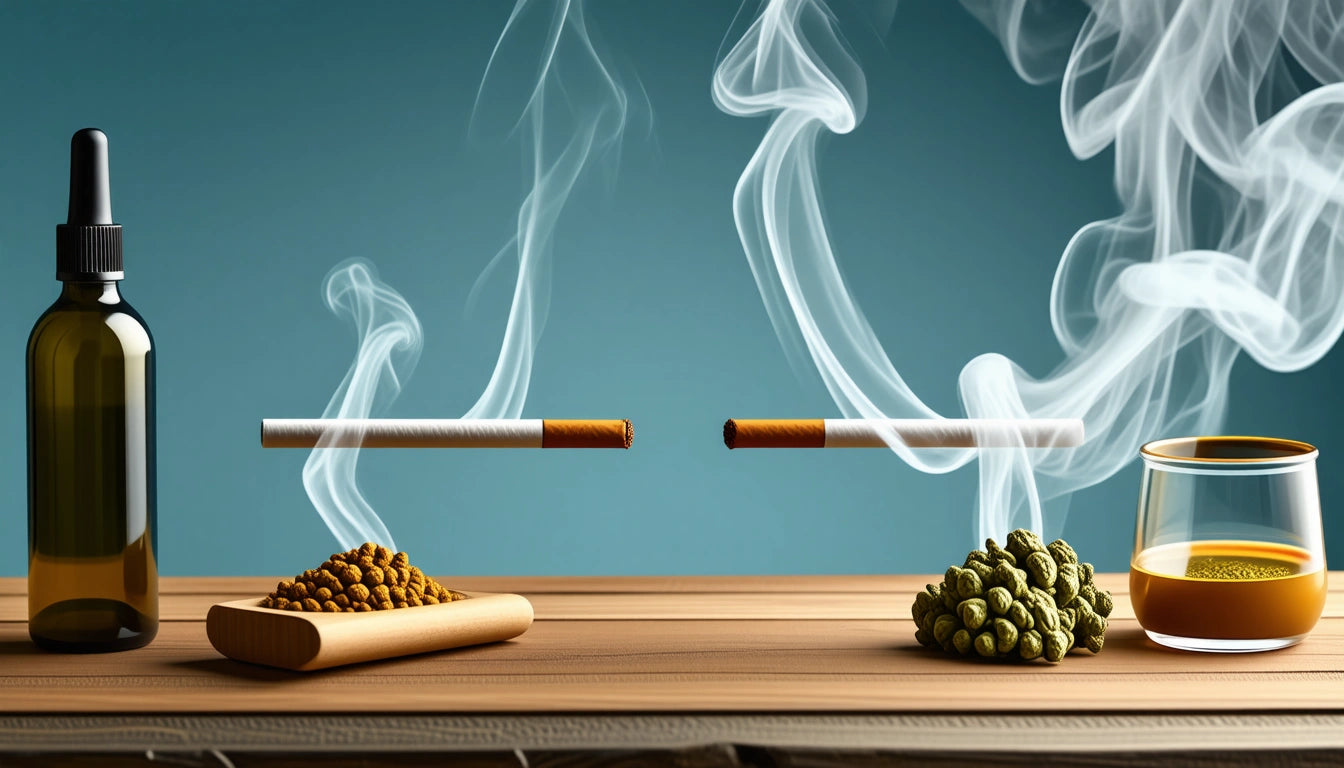
flower
Blunt vs. Joint: Understanding the Key Differences
Table of Contents
Fundamental Differences: Blunt vs. Joint
Materials and Construction
Smoking Experience and Effects
Health Considerations
Cultural Significance
Choosing Between Blunts and Joints
Cannabis consumption methods continue to evolve, but two classic options remain at the forefront: blunts and joints. Understanding the difference between a blunt and a joint helps consumers make informed choices about their preferred smoking method. Each offers distinct characteristics in terms of materials, effects, and overall experience.Fundamental Differences: Blunt vs. JointThe primary distinction in the blunt vs joint comparison lies in their wrapping materials. Joints are rolled using thin, lightweight rolling papers typically made from rice, hemp, or flax. Blunts, however, utilize cigar wraps or emptied cigars, which contain tobacco leaf as their outer layer.This fundamental difference affects everything from flavor profile to burn time, making the choice between a blunt and joint more than just an aesthetic preference. The tobacco content in blunts adds nicotine to the experience, creating a combined effect with cannabis that many users specifically seek out.Materials and ConstructionJoint MaterialsJoints typically require:
Rolling papers (rice, hemp, or flax-based)
Optional filter tip or crutch
Ground cannabis flower
The simplicity of joint materials makes them accessible for beginners. Papers come in various sizes, from single-wide to king-size, allowing for customization based on preference or occasion. For precise measurement of your cannabis, accurate digital scales can ensure consistent joint preparation every time, especially important for those who prefer specific amounts in their rolls.Blunt MaterialsBlunts require:
Cigar wrap or emptied cigar (made from tobacco leaf)
Ground cannabis flower
Optional humidity pack to keep wrap pliable
The tobacco leaf wrapping of blunts requires more moisture and careful handling than paper. Many consumers use specialized blunt wraps that come ready to fill, eliminating the need to split and empty a cigar.Highlight: The key difference between a blunt and a joint is that blunts use tobacco leaf wraps while joints use thin paper, significantly affecting flavor, burn time, and effects.Smoking Experience and EffectsWhen comparing joint vs blunt effects, several factors come into play:Burn Rate and DurationBlunts burn slower than joints due to the thicker wrapping material. A typical joint might last 5-10 minutes, while a blunt can burn for 20-30 minutes or longer. This makes blunts popular for group sessions or when a longer-lasting experience is desired.As detailed in this comparison of which is better between blunts and joints, the extended burn time of blunts can be either an advantage or disadvantage depending on your consumption preferences.Flavor ProfileJoints offer a purer cannabis flavor since paper has minimal taste. Blunts, however, impart a distinct tobacco flavor that mixes with the cannabis terpenes. Some blunt wraps come in flavored varieties like grape, cherry, or vanilla, further altering the taste profile.Potency and EffectsThe blunt vs joint high differs primarily due to the nicotine content in blunt wraps. This creates a combined effect that many users describe as more intense or "heady" than a joint high. The tobacco can create a stimulating effect alongside the cannabis experience.For those curious about other comparison points between consumption methods, this resource explains differences between bongs, joints, and blunts in detail.Health ConsiderationsWhen deciding between blunt or joint options, health factors are important to consider:Joints generally involve fewer additives and no tobacco, making them potentially less harmful than blunts. However, combustion of any plant material produces tar and carcinogens.Blunts contain nicotine from the tobacco wrap, which is addictive and comes with its own health risks. The combined smoke from both cannabis and tobacco may increase respiratory irritation.This detailed analysis of health implications provides more information on the comparative health aspects of both consumption methods.Cultural SignificanceBoth blunts and joints hold cultural significance in cannabis communities:Joints have been associated with cannabis culture since the early 20th century, appearing in counterculture movements, music, and art. They're often seen as the traditional, purist approach to smoking cannabis.Blunts gained popularity in urban communities during the 1980s and 1990s, becoming strongly associated with hip-hop culture. Artists like Snoop Dogg, Dr. Dre, and Redman helped popularize blunts in mainstream culture.Understanding what is the difference between a blunt and joint consumption includes recognizing these cultural contexts and how they've shaped modern cannabis use patterns.Choosing Between Blunts and JointsWhen deciding what is a blunt vs joint for your needs, consider these factors:
Duration: Choose blunts for longer sessions, joints for quicker consumption
Group size: Blunts are better suited for sharing among multiple people
Flavor preference: Select joints for pure cannabis taste, blunts for tobacco-cannabis blend
Tolerance: Newcomers might prefer joints due to the absence of nicotine
Health concerns: Those avoiding nicotine should stick with joints
For those interested in pre-rolled options, this guide to pre-roll blunts offers insights into commercially available products.Whether you prefer the tobacco-infused experience of a blunt or the pure cannabis approach of a joint, understanding these key differences helps ensure your choice aligns with your preferences and needs. Both methods continue to evolve with new materials and innovations while maintaining their distinct characteristics that cannabis enthusiasts have appreciated for generations.

